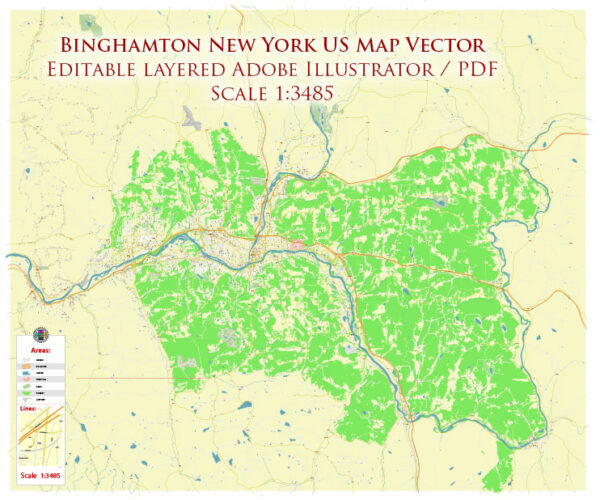Binghamton, New York, has a rich history of urban development that reflects the broader trends and challenges faced by many American cities. Here is a brief overview of the city’s urban development history:
- Early Settlement and Growth: Binghamton’s history as a city dates back to the late 18th century when it was initially settled by European colonists. It was initially a small village known as “Chenango Point.” The city’s location at the confluence of the Susquehanna and Chenango Rivers made it a strategic point for transportation and trade.
- Transportation Hub: Binghamton’s growth was significantly influenced by its status as a transportation hub. The construction of the Chenango Canal in the 1830s and the arrival of the Erie Railroad in the 1840s contributed to the city’s development. These transportation links facilitated the movement of goods and people, stimulating economic growth.
- Industrialization: Like many cities in the late 19th and early 20th centuries, Binghamton experienced rapid industrialization. The city became a center for various manufacturing industries, including shoes, cigars, and electrical equipment. This industrial growth attracted a diverse population and fueled urban development.
- Binghamton University: In 1946, the Triple Cities College was established in Binghamton, which later became Binghamton University. The presence of a major public university had a significant impact on the city’s development, attracting students, faculty, and research opportunities.
- Urban Renewal: Binghamton, like many American cities, experienced the effects of urban renewal efforts in the mid-20th century. The city saw the demolition of historic buildings and the construction of modern structures as part of these initiatives. Some neighborhoods were affected more than others, leading to changes in the urban landscape.
- Economic Challenges: In the latter half of the 20th century, Binghamton faced economic challenges as manufacturing industries declined. Many factory jobs disappeared, and the city’s population began to decline. This led to a period of economic and social adjustment.
- Revitalization Efforts: In recent years, Binghamton has made efforts to revitalize its urban core. This has included downtown revitalization projects, the preservation of historic architecture, and the promotion of arts and culture. The city has also focused on attracting tech companies and startups to diversify its economy.
- Education and Healthcare: Binghamton is home to a growing healthcare and education sector, with hospitals and medical facilities, as well as educational institutions contributing to the city’s development.
- Cultural and Recreational Amenities: Binghamton boasts a range of cultural and recreational amenities, including museums, parks, and cultural events. These assets contribute to the city’s quality of life and its appeal to residents and visitors.
Binghamton’s urban development history is marked by its industrial past, economic challenges, and ongoing efforts to revitalize and adapt to changing economic and social conditions. The city continues to evolve, with a focus on preserving its heritage while embracing new opportunities for growth and development.


 Author: Kirill Shrayber, Ph.D.
Author: Kirill Shrayber, Ph.D.